Quantum Computing, Cryptography & Quantum Machine Learning (Part 1)
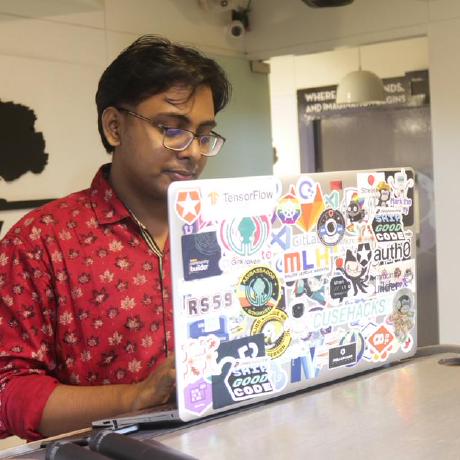 Md Shahriyar Al Mustakim Mitul
Md Shahriyar Al Mustakim MitulQuantum Physics
Quantum physics is difficult for us to experience with simple experiments because it usually deals with the behavior of extremely small particles.
But quantum physics also governs the behavior of light. We can understand quantum physics by studying how light behaves.
Light has a property called polarization. Photons of light are polarized at a specific angle. We can perform experiments with polarizers that alter the polarization of light.
The fundamental unit of quantum computation is a 'quantum bit' or qubit. Polarized photons behave like qubits. By studying polarization of light, we can understand how qubits behave.
Polarized photons act like a qubit and have entanglement and superposition
In classical computers this is how we represent bit

But in quantum computers, we define qubits by

Here we have some angle for the polarization
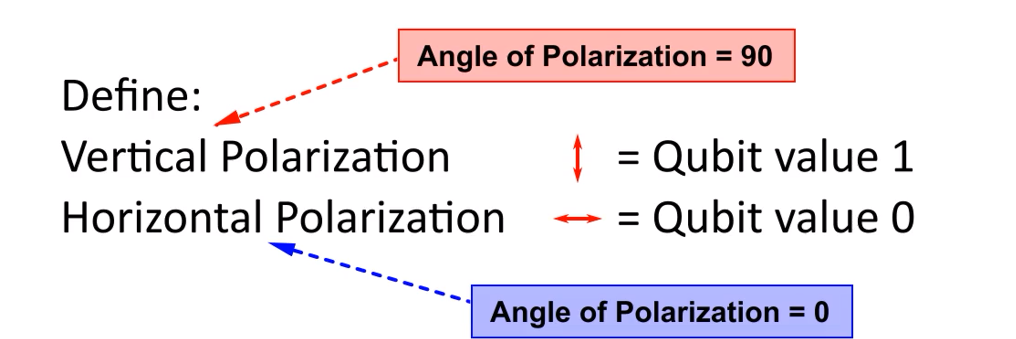
Let's experiment:
Remember, we can use filters to polarize photons (change directions)
Case 1: We are using a light source which will create a polarization (black here) also , we will use vertical filter which will create a polarization which will be made vertical once the light passed through the filter (red )
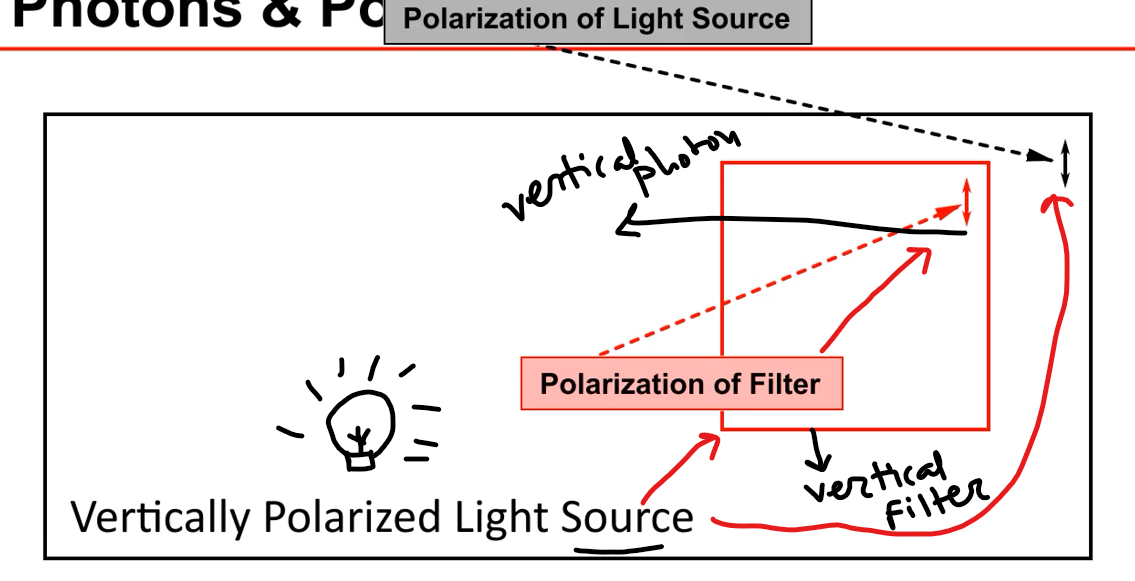
Case 2 : Here if we use a filter which is 45 degree angle with the light source, the polarization will be in 45 degree angle too (red)
Basically the light source itself created a vertical polarization in top right corner but once the light passes the filter, the photon is polarized on different angle
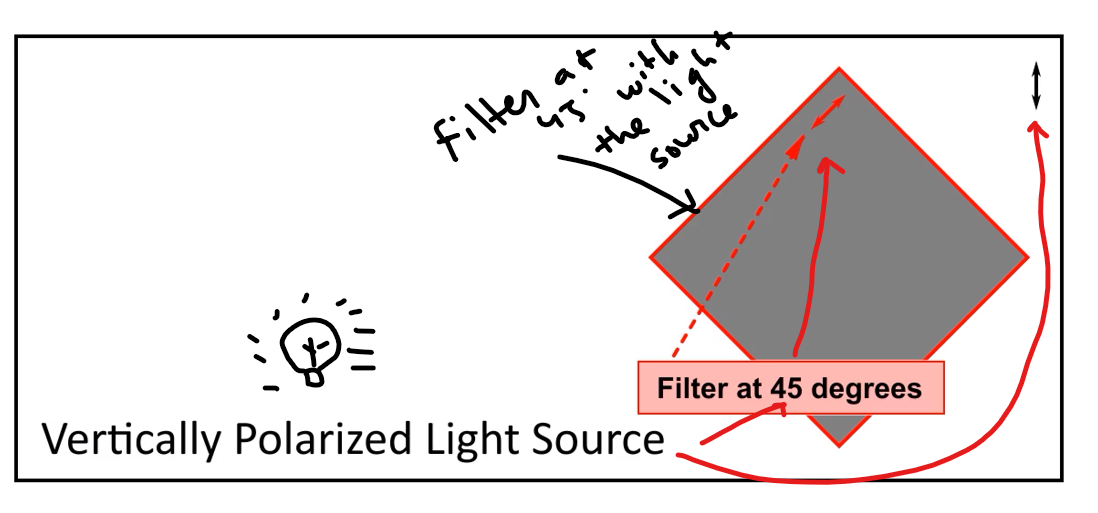
Case 3: One we change the angle of the filter to horizontal (90 degree with the light source), the photon is polarized horizontally (in 90 degree angle ; red)
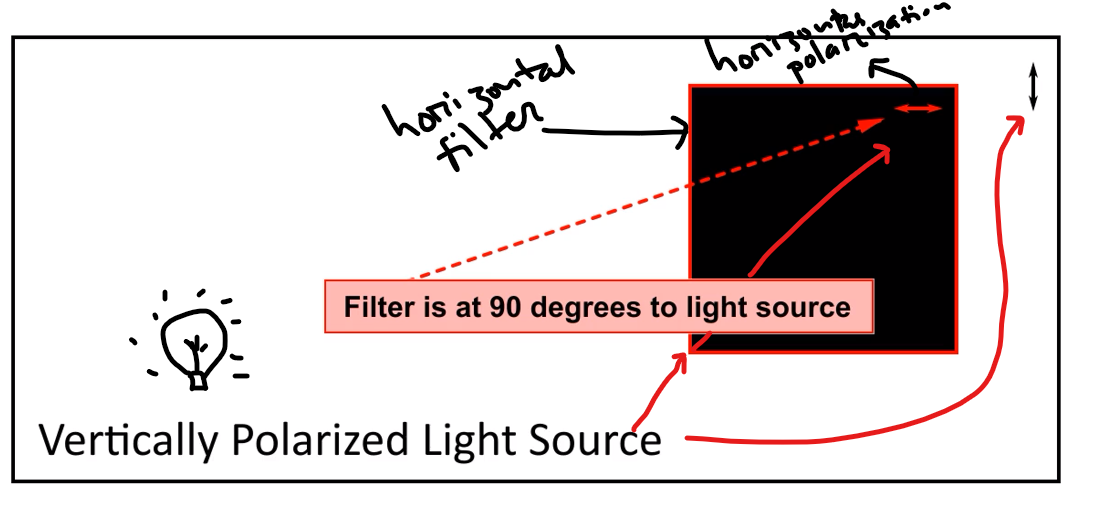
So, we can say:

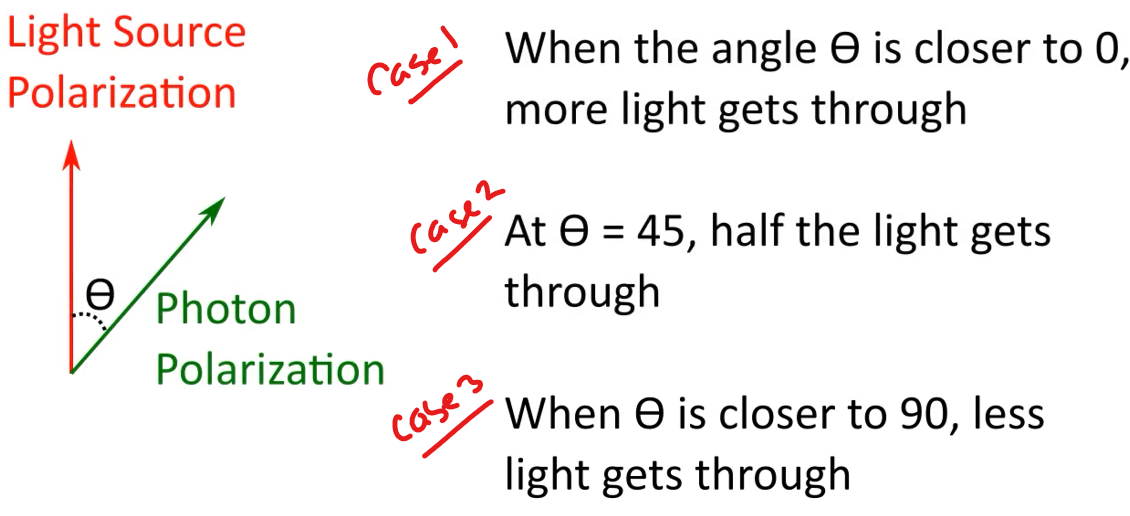
So, if we try to guess it with probability, can't we get the qubits?
Yes!!
When the photon (light source ) and filter aligns, we have probability of passing though the filter to 1 (qubit |1>)
When it's anti aligned, we have probability of passing though the filter to 0 (qubit |0>)
But when that's in between 0 & 90, we can have value between 0 & 1. That means it will have some value of 0 and some value of 1. So, superposition is getting created.
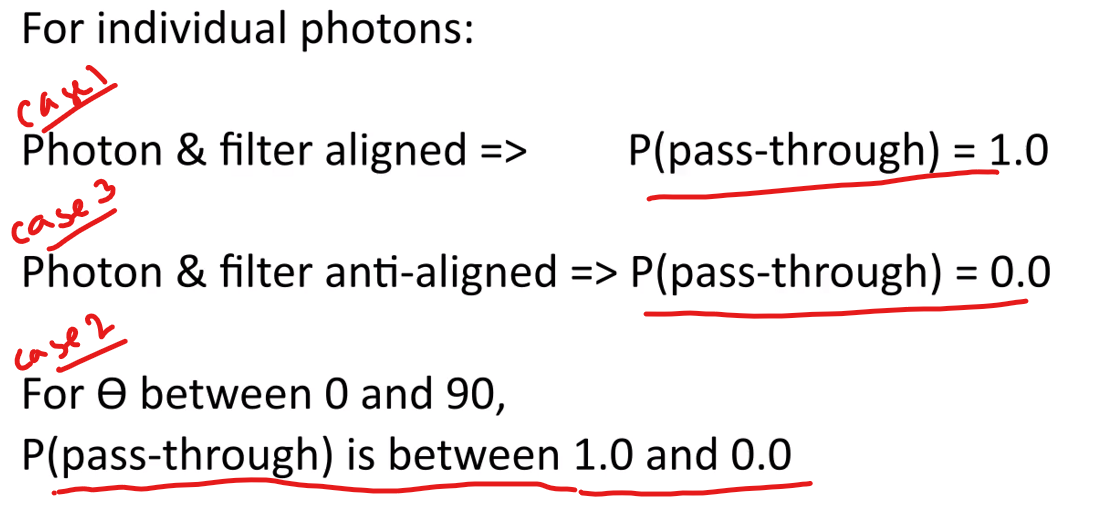
So, this is the whole process:
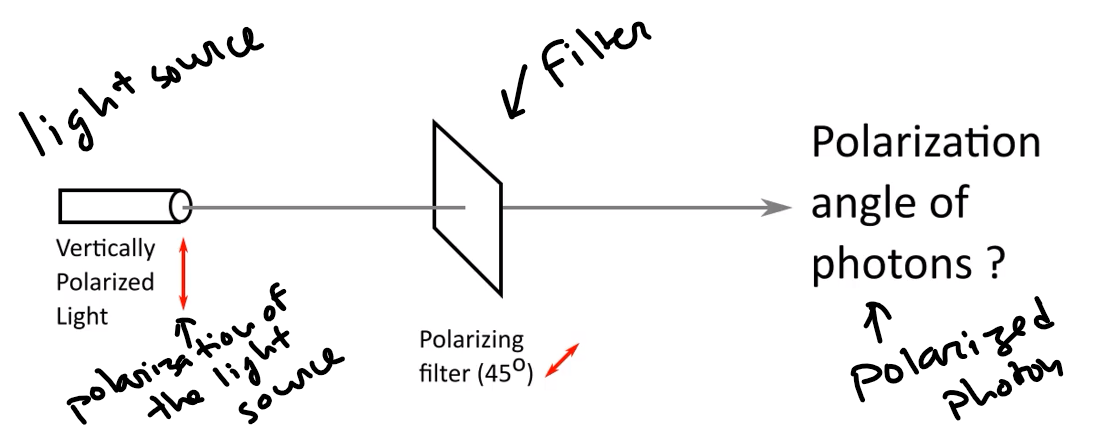
Here, 50% of photons will pass as 45 degree is the half of 90 degree . If we increase the filter angle, the less photon will pass. For example, when we have filter in 90 degree, very less photons pass through

Very important concept:
if we use a white light source with a red filter, we can see red lights.
But the white light was never made red. Basically the white light had all light components like green, blue, red etc and the red filter blocked other filters except the red.
So, we can just see the red light.
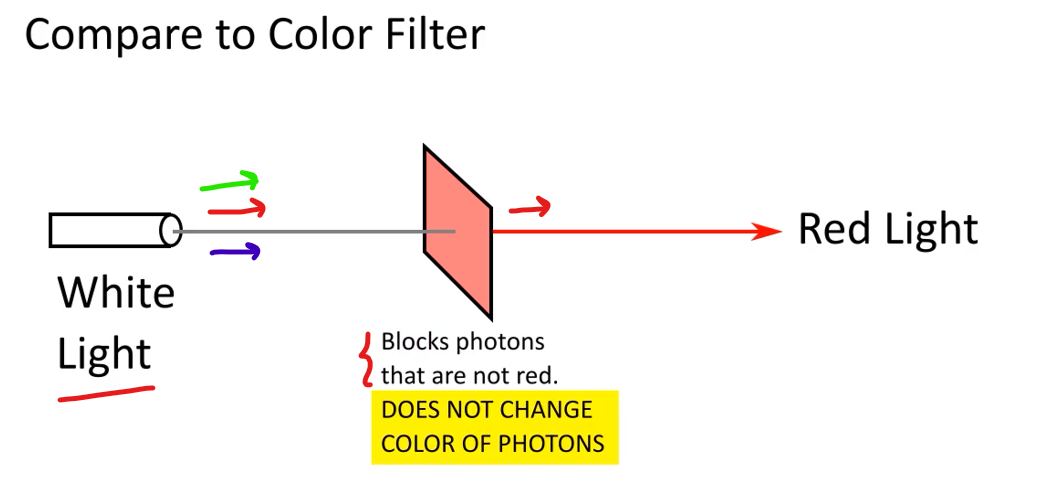
Again, if we want to see the Case 3 example mentioned earlier, we can see if we have angle difference of 90, we can barely see any lights passing though.
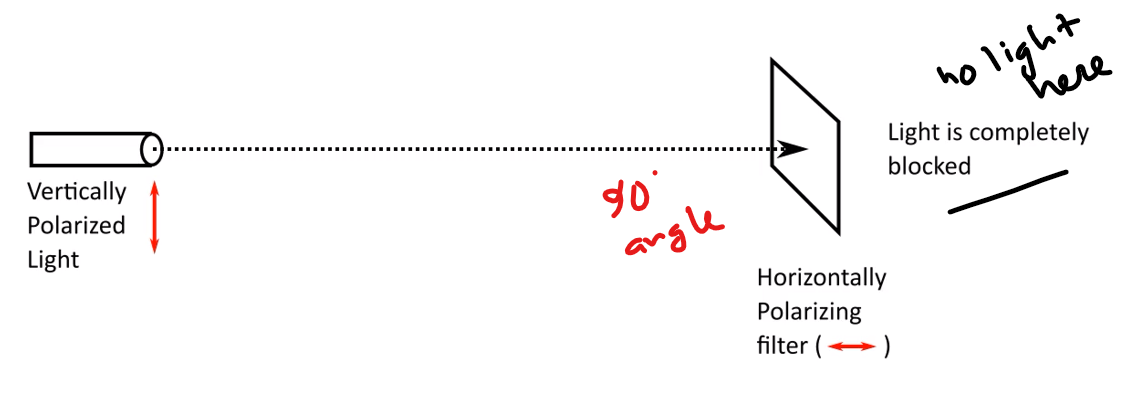
But if we keep a filter between them which has an angle 45 with the light source, according to case 2, 50% photons will pass.
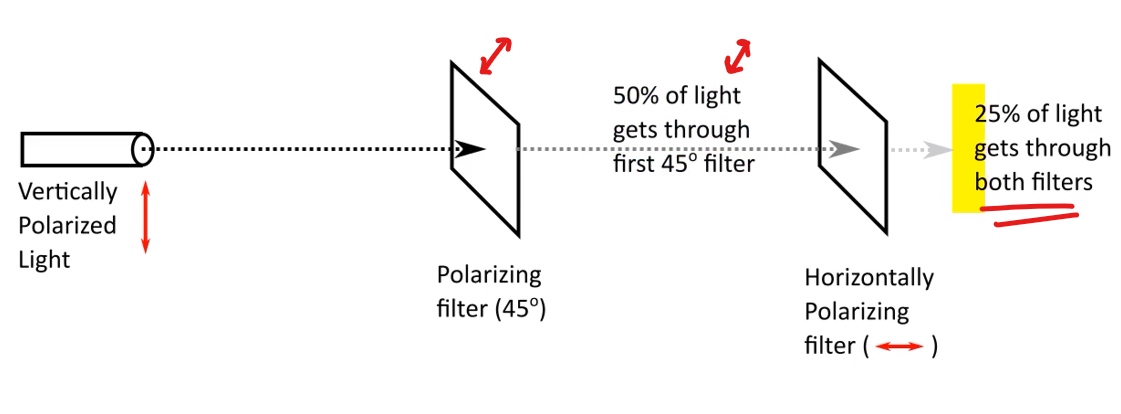
Those 50% will then pass to the horizontal polarized filter as the angle difference is again 45 degree (45 & 90 compared to the light source)
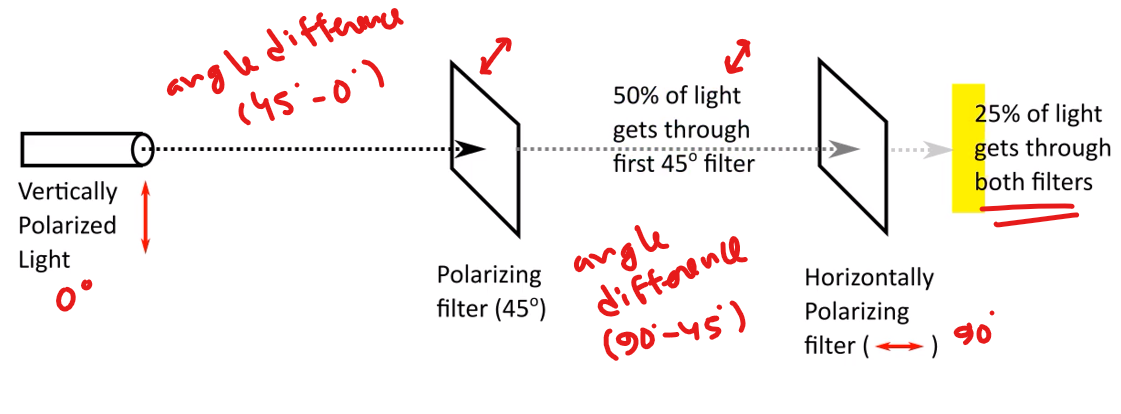
So, 50% of these light will pass though the horizontal filter which is actually 25% of the all lights passing from the light source
Using Calcite Crystal
We can use calcite crystal instead of filters.
In this way, when we send some light beam through calcite crystal, 50% of beam gets though as aligned photons and 50% becomes unaligned photons.
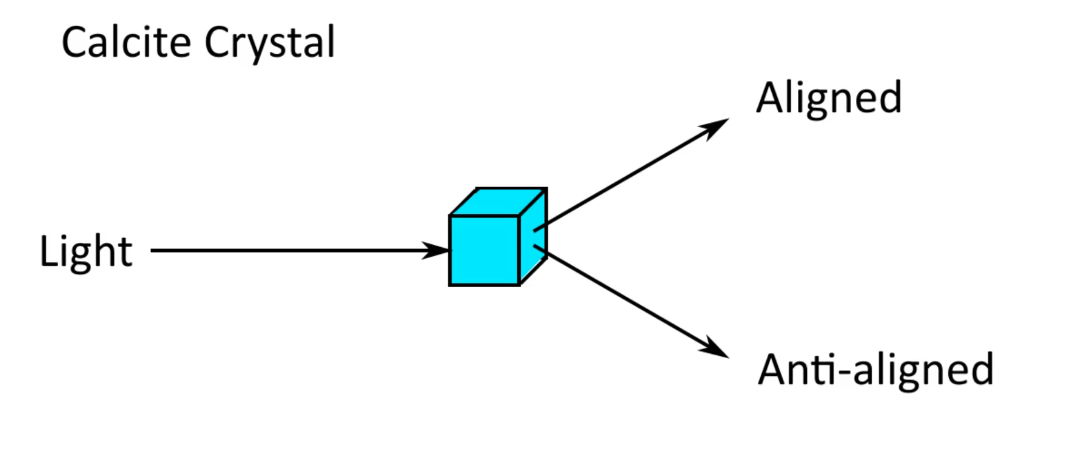
That means, it does not block any photons just like filters.
So, we can measure a photon by keeping multiple calcite or filter:
Here, we can see photons going aligned every time passing though the calcite. So, the unknown polarization should be aligned.
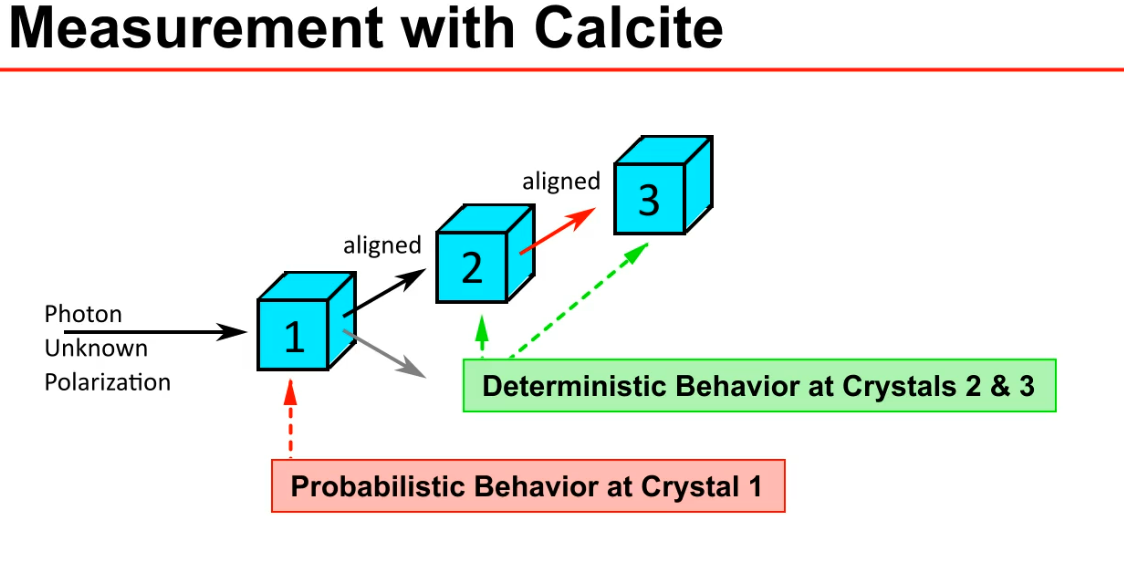
Again if the unknown photon was unaligned it could have been detected by this:
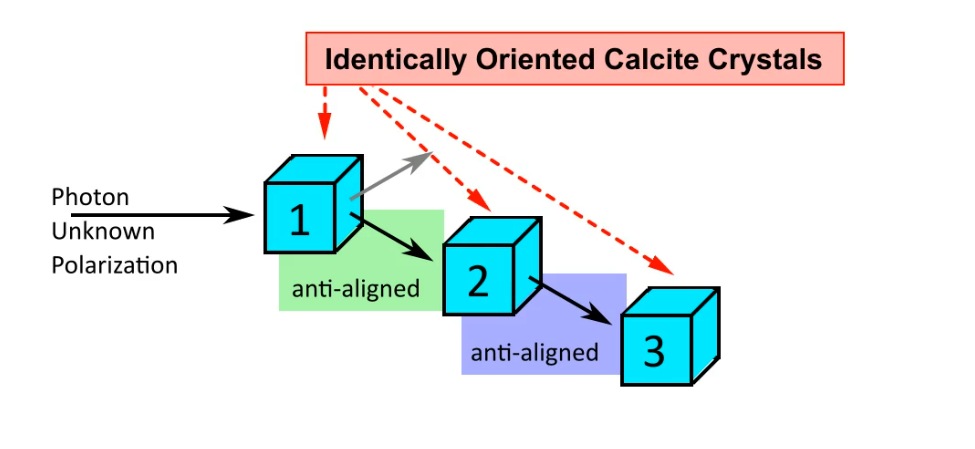
Finally, we can use multiple filters at same angle to see how many photons get out and then decide it's unknown polarization at first.
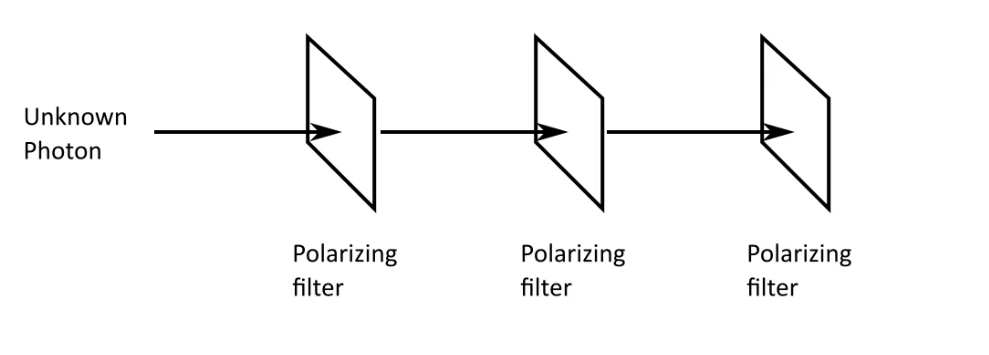
Done!
Subscribe to my newsletter
Read articles from Md Shahriyar Al Mustakim Mitul directly inside your inbox. Subscribe to the newsletter, and don't miss out.
Written by
